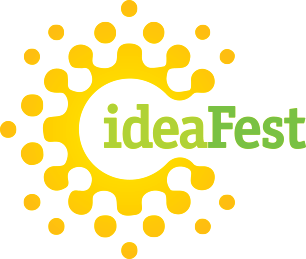Search Presenters & Abstracts
View Presenters & Abstracts by College
Presenters & Abstracts: College of Natural Resources & Sciences
Shorebird Vigilance from Biological Influences
Ryan Abdilla, Wildlife Undergraduate Student
College of Natural Resources & SciencesMy research project involves researching two different species of wild shorebirds, Marbled Godwits and Eurasian Whimbrels, and studying which biological factors like predator abundance, tide height, foraging rates, and time of day play a role in vigilant behavior in these two shorebird species. We are looking to see how these rates and their factors differ between 5 different areas across the Arcata Marsh and if there are noteworthy changes in any of the listed factors between the two species and which ones play the biggest role in shorebird vigilance and which do not.
Short and Long Term Effects of Antibiotic Treatment on Mitochondrial Membrane Potential and Proliferation of HEK293 Cells
Rhiannon Red Bird, Biological Sciences Undergraduate Student
- NateKrauseBiological SciencesUndergraduate Student
Antibiotics are commonly used in modern-day cell culture to prevent the loss of valuable data and cells- useful for protecting valuable cells during long-term studies. Cells are cultured in nutrient rich media, causing rapid proliferation of unwanted contaminants (i.e. viruses/ bacteria). We know that short term treatment negatively affects cell differentiation, proliferation, regulation and metabolism- yet, are still commonly used in cell culture. In this study, we cross-examined the effects of short term antibiotic treatments (96 hours) and long term antibiotic treatments (192 hours) on human embryonic kidney cell proliferation, mitochondrial membrane potential, and protein expression.
Silicon Photomultiplier Characterization
- Leonel MunozPhysicsUndergraduate Student
Silicon Photo Multiples (SiPM's) are relatively new photon detectors. They offer many advantages compared to photo multiplier tubes (PMT's) such as insensitivity to magnetic field, robustness at varying lighting levels, and low cost. The SiPM output wave forms are poorly understood. The experiment conducted collected waveforms of responses of Hamamatsu SiPM to incident laser pulse at varying temperatures and bias voltages. Ambient noise was characterized at all temperatures and bias voltages by averaging the waveforms. Pulse shape of the SiPM response was determined under different operating conditions
SINKING MICROFIBERS ON THE NEW ENGLAND CONTINENTAL SHELF BREAK
- Jennie WarmackOceanographyUndergraduate Student
In June 2016, the water column abundance and vertical flux profile of microfibers was examined using Niskin bottle collection and a vertical array of surface-tethered sediment traps at the continental shelf break south of Rhode Island. Fibers were extracted and analyzed on a Fourier transform infrared spectrometer to determine the type of materials present. Sinking rates of the fibers were estimated through three independent approaches: theoretical, field-based, and lab-based. In general, the field-based approach indicated roughly 8x slower sinking speeds than those observed in the lab or predicted by theory.
Small Mammals vs. Understory Plant Diversity and Health at L.W. Schatz Farm
Puyao Zhang, Wildlife Undergraduate Student
College of Natural Resources & SciencesThe experiment aims to gain insight into the ecology of small mammals and vegetation in an understory ecosystem.
Small Mammal’s Abundance in Relationship to Distance and Water Type
Mitchell Owen, Wildlife Undergraduate Student
College of Natural Resources & SciencesI went out to see if rodent abundance was impacted by how far they were from a water source and if there was a difference between flowing and standing water. There were many studies on water's impacts on rodents in deserts but not in forests, so I went out to change that.
Soils and Climate Change
- Tess McDermott SwansonEnvironmental ScienceUndergraduate Student
The pedosphere is an often overlooked resource already affected by and contributing to climate change. For example, soil stores a certain amount of carbon, and biological processes in soil emit the powerful greenhouse gas nitrous oxide (N2O). The amount of nutrients, microorganisms, and moisture that soils hold are all affected by atmospheric CO2 levels and surface temperatures. Soils are an extremely important part of the earth’s biosphere, and they can be managed more effectively to mitigate their effects to the climate and the changing climate’s effects on them. I will explore these impacts and relate them to primary productivity, food security, human health, and land desertification.
Song dialect recognition in White-crowned Sparrows
- Nathan ChavezWildlife DepartmentUndergraduate Student
White-crowned sparrows have different dialects in their songs depending on the region. This project was done to determine if sparrows local to Humboldt County are capable of recognizing dialects from different regions throughout the U.S.
Spatial and Temporal Variations of Microplastics within Humboldt Bay
- Isabelle MarcusOceanographyUndergraduate Student
- Bennett HosselkusOceanographyUndergraduate Student
- Cole HutsonOceanographyUndergraduate Student
- Michael JacobsOceanographyUndergraduate Student
- Connor McNeilOceanography
- Stephanie OlivarezOceanographyUndergraduate Student
- Leah NewtonOceanographyUndergraduate Student
- Rebecca ThompsonOceanographyUndergraduate Student
- Tamara Beitzel BarriquandOceanographyFaculty
- Jeffrey AbellOceanographyFaculty
This study was conducted by the students of OCN496 in the fall of 2020. The goal of this study was to quantify the amount of microplastics in Humboldt Bay by observing its sediment and water column at specific locations during the tidal cycle. Additionally, we wanted to observe how tidal fluctuations impact the concentration and transport of microplastics in the water column.
Spectral Analysis of Currents in Humboldt Bay
Taylor Juchau, Oceanography Undergraduate Student
- KarinaBernbeckOceanographyUndergraduate Student
- NoeCamarilloPhysics & AstronomyUndergraduate Student
- StevenGracyPhysics & AstronomyUndergraduate Student
- EmmaModrickOceanographyGraduate Student
- TamaraBarriquandOceanographyFaculty
Our purpose is to analyze the ADCP (Acoustic Doppler Current Profiler) data from the PORTS Hookton Channel Day Marker 3 station in Humboldt Bay, CA, to compare with the analysis of the ADCP data at the PORTS Chevron Pier station done by Emma Modrick and Isabelle Marcus (Modrick et al., 2022). We want to determine the proportion that each tidal component makes to the mixed semidiurnal tides in the bay, by looking at the dominant frequencies in the tidal currents. We will then compare our results with those of Modrick and Marcus, as well as with the published results of the National Oceanic and Atmospheric Administration (NOAA).
